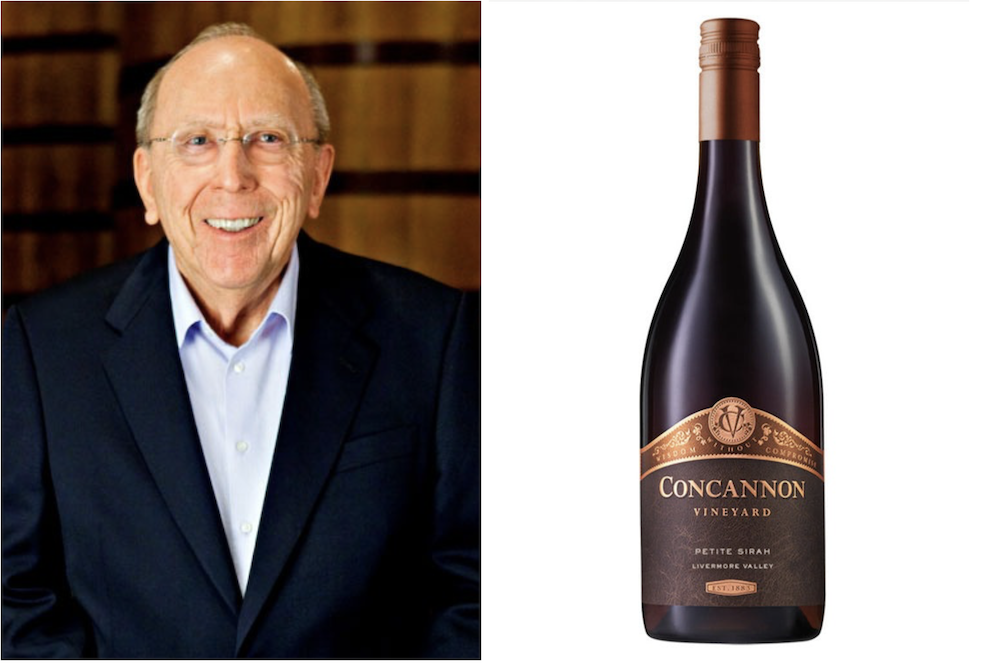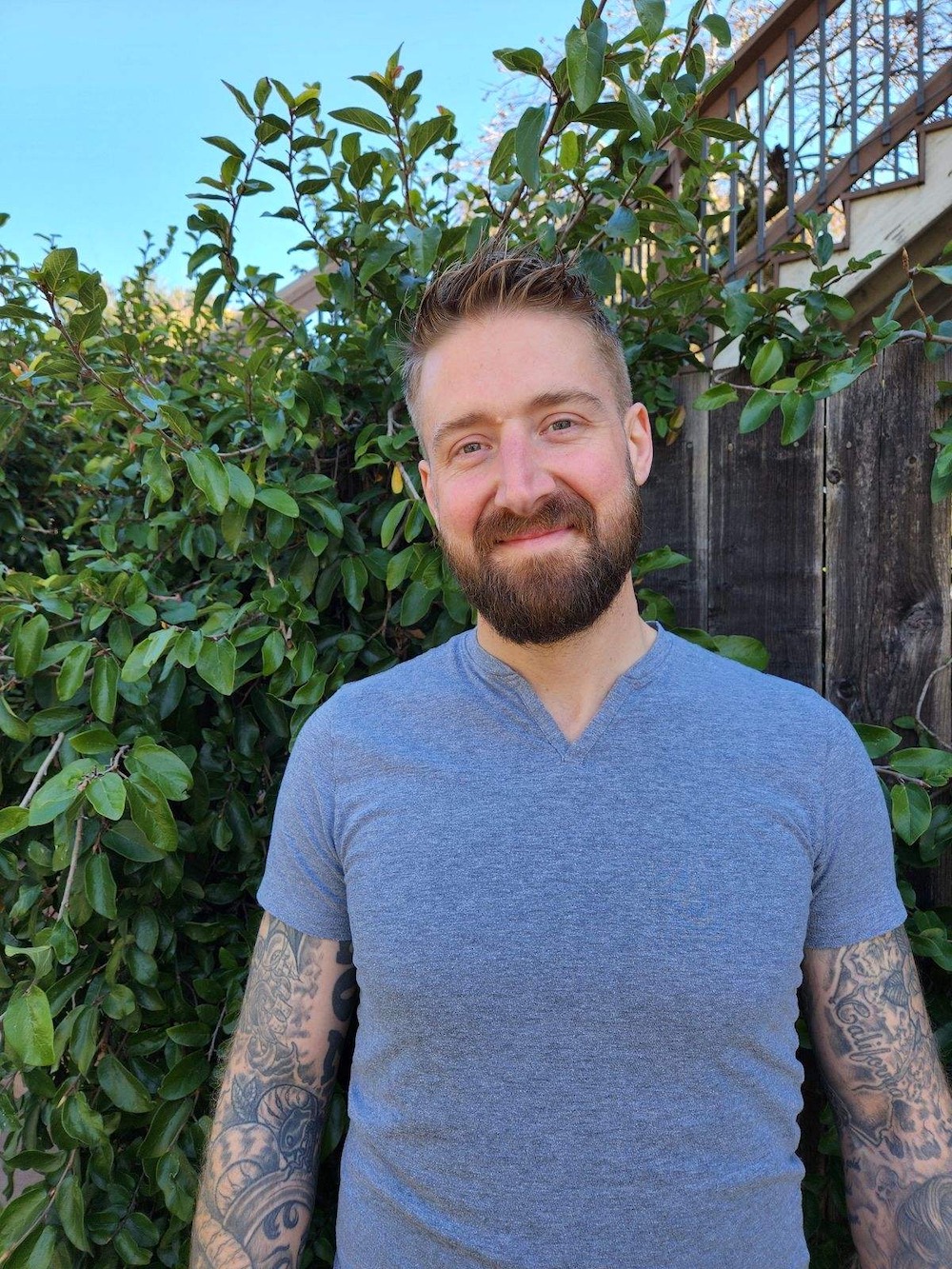January 24, 2025 – The alignment of events could not have been more perfect. During a break in the intense schedule of the SF Chronicle Wine competition, we were planning to have dinner with a couple we met in the wine industry years ago, courtesy of Concannon Vineyard, one of the oldest brands in America.

Jo and Jose Diaz are originally from Maine, where they had fascinating careers in radio and tv, and ended up meeting and photographing some of the original icons of music history. But when we met, they were doing PR for an organization that promoted Petite Sirah, called PS I Love You. This, too, was a confluence of timing and talent.
Livermore winemaker John Concannon was the first to bottle a varietally labeled Petite Sirah in 1964, Souverain released one immediately thereafter. Petite Sirah would soar to a high of 14,000 acres in California, only to fall to around 2,000 less than 20 years later. Recognized as a great blender, it gained some ground and has actually climbed back to 11,000 acres in 2023, making it the sixth most widely planted red variety today.
In 2002, wine marketer Jo Diaz, Louis Foppiano, and Christine Wells of Foppiano launched PS I Love You, a marketing advocacy group for Petite Sirah, with a mission to promote, educate, and legitimize this noble wine grape variety.
That year marked the first PS I Love You symposium which continued annually until 2013, mostly held at Concannon Vineyards in Livermore. At one point, it drew more than 20 different Petite Sirah producers from all over California and beyond.

Petite Sirah is how I met winegrower and dear friend Pat Spangler from Roseburg, Oregon and also esteemed wine writer Dan Berger, who has become a great mentor. Berger is credited with coming up with the name for the organization. Spangler once hosted a group of my wine friends at his Oregon home, where we spent the night drinking Petite Sirah with bats flying about his living room, but that’s another story.
Fast forward to this year’s SF Chronicle Wine Competition. I had 40 some Petite Sirah leading blends on my panel, and there is nothing like that grape to leave blue purple stains on your lips, teeth, tongue and hands. One cannot wear white around Petite Sirah. It’s like an ink stain. Bear with me, because ink happens to be fundamental to this story.
Jo and Jose now live in Geyserville, not far from Cloverdale, where the competition has been held for 25 years. We were to meet at Diavola, a local pizza joint, but when we arrived, it was overflowing with customers. There were no tables for four and I had neglected to make a reservation. So we ambled down the old wooden sidewalk (the town floods easily) to Catelli’s, another local favorite and were lucky to score a table, as the place was filled with wine judges and competition support staff.

Our waiter announced himself as Cameron and promised to take good care of us, inviting us to make ourselves at home. Does that mean I can go find a water pitcher on the sideboard and help myself, or go into the kitchen and dish with the chef? I’m never sure what to make of that. Jose, however, had a different line of inquiry in mind. He was fascinated by the many beautiful tattoos that graced Cameron’s arms, seamlessly flowing from wrist to bicep. Cameron was only too happy to oblige. Turns out he himself had designed all the art: the beautiful women, the floral motifs, all the symbology that was meaningful to him. There was even an extensive bit of script on his left forearm. He looked like the illustrated man. Both Jo and Jose asked him what the script meant.
“My English teacher in high school challenged us to find an author with whom we connected and present some of their work to the class, explaining why we chose it and what it meant to us. I selected Robert Frost,” Cameron explained. Years later, when he was having that arm inked, there was a void between elbow and wrist that needed filling. He thought back to Robert Frost and a poem that had become dearer to him as time went on. “Nothing Gold Can Stay,” a poem written by Frost in 1923, appeared in a 2024 collection called “New Hampshire,” that won the Pulitzer Prize for poetry that year.

Nothing Gold Can Stay
BY ROBERT FROST
Nature’s first green is gold,
Her hardest hue to hold.
Her early leaf’s a flower;
But only so an hour.
Then leaf subsides to leaf.
So Eden sank to grief,
So dawn goes down to day.
Nothing gold can stay.
In this time of fundamental change on a universal level, particularly in the wine world, those words resonate more than ever. Whether we are entering a new “golden age” or actually bidding one adieu, nothing is permanent.
I’ve been around long enough to witness boom and bust cycles. In the 1980s, there was a huge glut of wine and Zinfandel vines were being yanked. What ultimately saved them was the creation of White Zin, a beverage that brought hordes of new wine drinkers into the fold. It ultimately fueled the Parker-driven boom cycle that was further intensified by the growing popularity of high-octane Cabernet Sauvignon and Chardonnay in the 1990s.
Then in 2004 came the film Sideways, sparking the ripping out of thousands of acres of Merlot and the rampant planting Pinot Noir with no regard to suitability of terroir. Now we have way, way too much Pinot Noir, most of it seriously overpriced.
By 2012, the red blend craze went bonkers, with the goal of stuffing as much alcohol and tannin as possible into a bottle. As a counterpoint to big and extracted, the fascination with “natural” wine and orange wines appeared, yielding outcomes dubious at best.
Now we’re in the “low and no” phase, ripping the guts out of largely mediocre wine to fill a perceived need. But, then, did anyone need White Zin? Did anyone need White Claw? Did we need Pet Rocks or Cabbage Patch Dolls? We really are trend whores.
We can wear our hearts on our sleeves, our car windows or our flesh, but the most important thing is that we remember what really counts. The people in our lives that we love and cherish, those who are near and dear, regardless of distance. We are so lucky we have so many ways to keep in touch and connect, and wine most assuredly does this.
Journalism, art, music, dance, film, winemaking: they are all art forms that encourage personal expression, and they are all in danger. As video clips, sound bites, digital media and memes take over the universe, let’s never lose love for the written word. Let’s not lose the ability to read and write in cursive: some of the best penmanship in the world is on display in the Declaration of Independence.
Let us revel in our freedom of expression as long as we have it: let us drink the best wine we can, and encourage talented winemakers to do the same, all the while knowing how fragile and precious is this moment.
Nothing gold can stay.
Tattoos, however, are pretty permanent.
“I have my ex-wife’s initials inked above my heart,” Cameron told us. “Turns out that was a mistake.”
About the author
Laura Ness is a longtime wine journalist, columnist and judge who contributes regularly to Edible Monterey Bay, Spirited, WineOh.Tv, Los Gatos Magazine and Wine Industry Network, and a variety of consumer publications. Her passion is telling stories about the intriguing characters who inhabit the fascinating world of wine and food.
- Laura Nesshttps://www.ediblemontereybay.com/author/lness/
- Laura Nesshttps://www.ediblemontereybay.com/author/lness/
- Laura Nesshttps://www.ediblemontereybay.com/author/lness/
- Laura Nesshttps://www.ediblemontereybay.com/author/lness/


